Generative AI and Virtual Reality Redefine Linguistic Preservation
A pioneering initiative by San Diego City University (SDCU)’s Digital Humanities Lab has developed a VR-based storytelling platform that archives 19 endangered indigenous languages, achieving a 92% linguistic fidelity rate in generative speech reconstruction. Published in Language Documentation & Conservation, this research demonstrates how distributed online learning ecosystems can empower marginalized communities to reclaim their linguistic heritage.
Research Context and Technological Innovation
Indigenous languages face extinction at a rate of one every four months, with many oral traditions reduced to fragmented recordings. Traditional preservation methods rely on text transcription, which loses phonetic nuance and cultural context. SDCU’s VR Lexicon Engine addresses these gaps through:
- Neural Acoustic Tomography: A transformer-based model trained on 7,800+ hours of oral histories from 12 indigenous communities, reconstructing phonemes with 94% accuracy even from degraded wax cylinder recordings.
- Immersive Memory Palaces: VR environments where users navigate semantic landscapes tied to linguistic concepts, such as the Inuktitut concept of silattuq (ice stability) through interactive 3D simulations.
- Federated Learning Frameworks: Community-owned AI models that train on local dialects without transferring raw data, ensuring compliance with the UN Declaration on the Rights of Indigenous Peoples (UNDRIP).
Key technical breakthroughs:
- Generative Phoneme Synthesis: A diffusion model that extends fragmented recordings into full narratives, validated through comparative analysis with 19th-century ethnographic films.
- Haptic Feedback Dictionaries: Wearable devices translate digital lexicons into tactile vibrations, aiding learners with hearing impairments in acquiring sign language variants.
- Ethical AI Governance: Blockchain-verified consent logs track data usage, allowing speakers to revoke access to sensitive materials in real time.
Decentralized Collaboration and Community Agency
The project exemplified SDCU’s hybrid research ethos:
- Linguists in the Amazon trained acoustic models on Pirahã tonal variations using SDCU’s Cloud Annotation Suite.
- Artists in New Zealand co-designed VR environments with Māori elders, embedding karakia (prayers) into terrain generation algorithms.
- Students in Nairobi developed multilingual dialogue systems for the Maasai community’s Enkang (cattle enclosure) narratives.
“This model inverts colonial archiving practices,” noted the project lead. “While linguists provide technical scaffolding, the Okanagan Nation’s elders determined which stories are prioritized for neural reconstruction.”
Educational Integration and Pedagogical Impact
The platform is central to SDCU’s Indigenous Futures micro-credentials:
- Virtual Apprenticeships: Students learn toponymy by navigating VR landscapes where each mountain name triggers audio narratives from the Tewa people.
- Ethical Storytelling Simulations: Gamified modules challenge learners to balance archival accuracy with community sensitivities, such as redacting sacred knowledge from public datasets.
- Global Knowledge Networks: A replicable toolkit lets communities build their own VR lexicons, with 47 languages now accessible via UNESCO’s Open Educational Resources portal.
Real-world outcomes include:
- Language Revitalization: The Ainu community in Japan used the platform to train 120 youth in kamuy-huci (hearth deity) rituals, doubling active speakers under age 30.
- Legal Advocacy: The Saami Parliament utilized VR testimony archives to support land rights claims in the Norwegian Supreme Court.
- Curriculum Transformation: The University of Chile integrated the Mapuche ñuque (spiritual ecology) modules into its environmental law program.
Scalability and Future Directions
SDCU plans to expand the framework through:
- AI Co-Creation Workshops: Enabling speakers to train models on ceremonial languages without exposing them to external datasets.
- Neural Translation for Oral Histories: Developing models that convert signed languages into spoken equivalents while preserving gestural morphology.
- Decentralized Language Commons: A DAO-governed repository where communities monetize language data via NFT-based licensing.
“These tools don’t just preserve words—they resurrect worlds,” stated a Saami elder. SDCU’s Linguistic Vitality Index now ranks revitalization efforts, with the Ainu and Māori programs leading global benchmarks.
Conclusion
By merging generative AI with immersive VR, SDCU demonstrates how online education can democratize linguistic sovereignty. As one Ainu learner reflected: “In the VR hearth, my grandmother’s stories breathe again—not as relics, but as living dialogues.”
